
Greene County is a county located on the eastern border of the U.S. state of Tennessee. As of the 2020 census, the population was 70,152. Its county seat is Greeneville. Greene County comprises the Greeneville, TN Micropolitan Statistical Area.

Bloomfield is a city in Davis County, Iowa, United States. The population was 2,682 at the 2020 census. It is the county seat of Davis County.
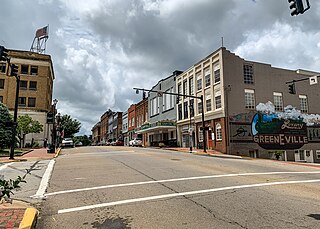
Greeneville is a town in and the county seat of Greene County, Tennessee, United States. The population as of the 2020 census was 15,479. The town was named in honor of Revolutionary War hero Nathanael Greene, and it is the second oldest town in Tennessee. It is the only town with this spelling in the United States, although there are numerous U.S. towns named Greenville. The town was the capital of the short-lived State of Franklin in the 18th-century history of East Tennessee.

A trapeze is a short horizontal bar hung by ropes, metal straps, or chains, from a ceiling support. It is an aerial apparatus commonly found in circus performances. Trapeze acts may be static, spinning, swinging or flying, and may be performed solo, double, triple or as a group act.
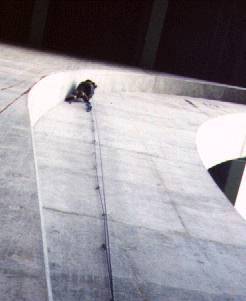
Buildering describes the act of climbing on the outside of buildings and other artificial structures. The word "buildering", sometimes misspelled bildering, combines the word building with the climbing term bouldering. If done without ropes or protection far off the ground, buildering is extremely dangerous. It is often practiced outside legal bounds, and is thus practiced mostly at night.

Harry H. Gardiner, better known as the Human Fly, was an American man famous for climbing buildings. He began climbing in 1905, and successfully climbed over 700 buildings in Europe and North America, usually wearing ordinary street clothes and using no special equipment. "One hundred and twenty of those who have sought to imitate me in this hazardous profession have fallen to death," Gardiner is quoted as saying in a 1905 article published in Muscle Builder. "There is no chance of 'rehearsing' your performance. Each new building is an unknown problem. If you do not guess the right answer, death awaits below, with a breath of up-rushing air, and arms of concrete." Former President Grover Cleveland reportedly nicknamed him "The Human Fly." When he visited Logan, West Virginia in January 1927, the Logan Banner described him as a "boyish-looking man of 57 years." Gardiner reportedly moved to Europe after New York enacted legislation forbidding anyone from climbing on the outside of buildings. Details surrounding his death are unknown, but a person matching his description was found beaten to death at the base of the Eiffel Tower in 1933.

The flying trapeze is a specific form of the trapeze in which a performer jumps from a platform with the trapeze so that gravity makes the trapeze swing.
The Flying Wallendas is a circus act and group of daredevil stunt performers who perform highwire acts without a safety net. They were first known as The Great Wallendas, but the current name was coined by the press in the 1940s and has stayed since.
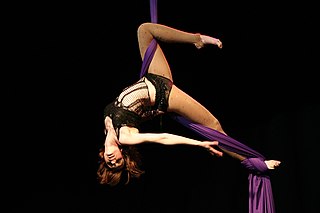
Aerial silks is a type of performance in which one or more artists perform aerial acrobatics while hanging from a specialist fabric. The fabric may be hung as two pieces, or a single piece, folded to make a loop, classified as hammock silks. Performers climb the suspended fabric without the use of safety lines and rely only on their training and skill to ensure safety. They use the fabric to wrap, suspend, drop, swing, and spiral their bodies into and out of various positions. The fabric may also be used to fly through the air, striking poses and figures. Some performers use rosin on their hands and feet to increase the friction and grip on the fabric. Aerial silks is a demanding art and requires a high degree of strength, power, flexibility, courage, stamina, and grace to practice.
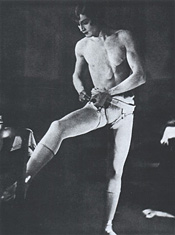
Vander Clyde Broadway, stage name Barbette, was an American female impersonator, high-wire performer, and trapeze artist born in Texas. Barbette attained great popularity throughout the United States but his greatest fame came in Europe and especially Paris, in the 1920s and 1930s.
Alfredo Codona was a Mexican trapeze artist who was a member of the world-famous "Flying Codonas" and was the first aerialist to continually perform the triple somersault. Alfredo came from an itinerant performing family whose origins lie with the Codoni family in the Italian speaking area of Canton Ticino in southern Switzerland.

Trapeze is a 1956 American circus film directed by Carol Reed and starring Burt Lancaster, Tony Curtis and Gina Lollobrigida. The film is based on Max Catto's 1950 novel The Killing Frost, with an adapted screenplay written by Liam O'Brien.
John Ciampa (1922–1970) was an Italian-American acrobatic stuntman and entertainer known by the stage names of the Human Fly, the Flying Phantom and the Brooklyn Tarzan.
CharlesBroadwick was an American pioneering parachutist and inventor. An executive director of the U.S. Parachute Association, Ed Scott, said "just about all modern parachute systems" use ideas Broadwick developed: "an integrated, form-fitting harness and container system nestled on the back." Broadwick developed the static line, a line from a parachute to an aircraft that pulls the parachute from its pouch. Static lines are still used by paratroopers and novice skydivers. U.S. Army Warrant Officer Jeremiah Jones commented, "[Broadwick] is like the grandfather of paratroopers." Broadwick demonstrated parachute jumps at fairs and taught and equipped famous female parachutist Tiny Broadwick.
The following events occurred in October 1937:
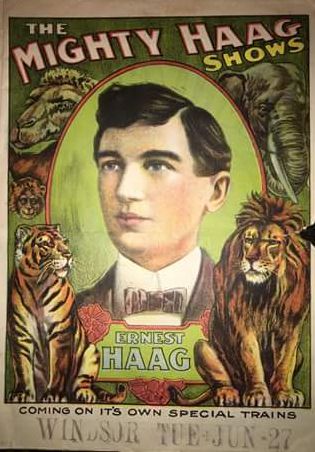
Mighty Haag Circus was started by American entrepreneur Ernest Haag in Shreveport, Louisiana. His circus toured continuously for over 40 years, from 1891 to 1938. During these years, the circus used a variety of types of transport: boat, carts, trains, horse-pulled wagons, and trucks. It was one of the largest traveling circuses in the United States.

Rossa Matilda Richter, who used the stage name Zazel, was an English aerialist and actress who became known as the first human cannonball at the age of 17. She began performing at a very young age, practicing aerial stunts like tightrope walking in an old London church. She took up ballet, gymnastics, and trapeze by the time she was 6 and, at 12, went on tour with a travelling acrobat troupe. In 1877, she was the first person to be fired out of a cannon, in front of a large crowd at the Royal Aquarium.
Terry Cavaretta aka Terry Cavaretta-St. Jules is an American aerialist. In 1977, she became the first woman to perform a quadruple somersault on flying trapeze. She is listed in the Guinness Book of Records for achieving the most triple somersaults. She was also the first aerialist to perform a triple back somersault with one and a half twists.

Miss La La was an expert aerialist who served as muse to Edgar Degas and was depicted in his 1879 painting Miss La La at the Cirque Fernando. She was also depicted in a poster for the Folies Bergère. She was the star of Troupe Kaira, a traveling circus act, and performed with the Cirque Fernando, based in Montmartre.
The Flying Cavarettas were an American aerialist act that gained widespread popularity in the 1960s and 1970s for their acrobatic performances and international tour and media appearances. Initially composed of teenaged siblings, the team, inducted into the Circus Ring of Fame in 2009, is best known for its role in popularizing acrobatic and circus shows on the Las Vegas Strip, the brief pop cultural notoriety of catcher Jimmy Cavaretta, and the athletic accomplishments of lead flyer, Guinness World Record-holder Terry Cavaretta.













